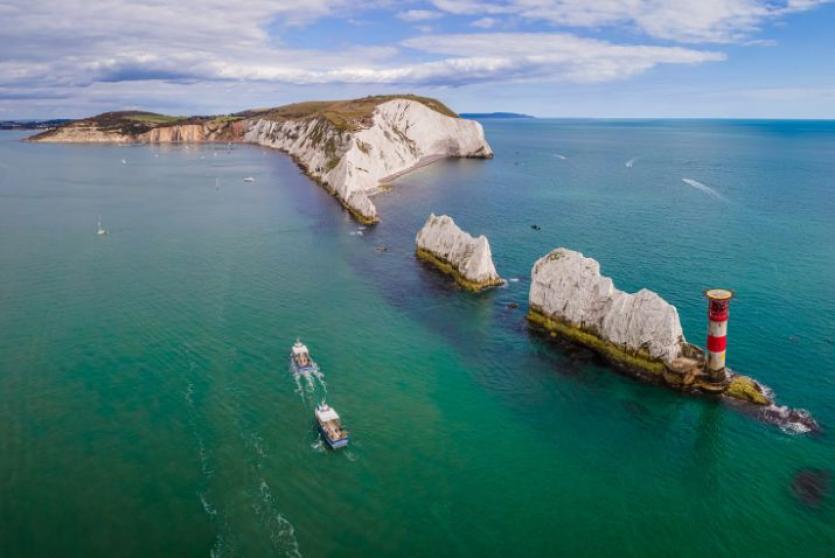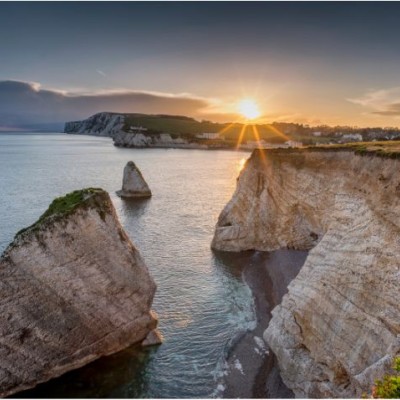The Isle of Wight: a place where history and legend intertwine, the Island is a treasure trove of stories waiting to be discovered. How many of these have you explored?
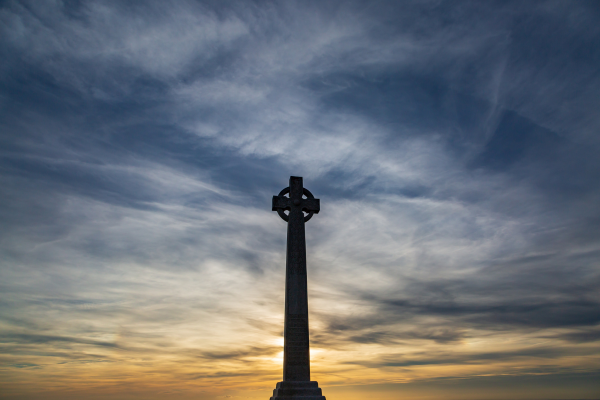
Tennyson Monument: A Poetic Tribute
Atop Tennyson Down, the highest point formerly known as High Down, stands the imposing monument to Alfred, Lord Tennyson, Queen Victoria’s Poet Laureate and a passionate advocate for the Isle of Wight. Designed by JL Pearson, the monument, crafted from marble by Farmer & Brindley, was erected in 1897 at Tennyson’s beloved location. He frequently roamed these downs during his years on the island, praising the air’s value as “sixpence a pint.”
Though Tennyson is interred at Westminster Abbey, his heart belonged to the Isle of Wight. He resided at Farringford in Freshwater, initially renting the property before purchasing it in 1858. Here, he penned works like “The Charge of the Light Brigade,” inspired by the Island’s breathtaking scenery.
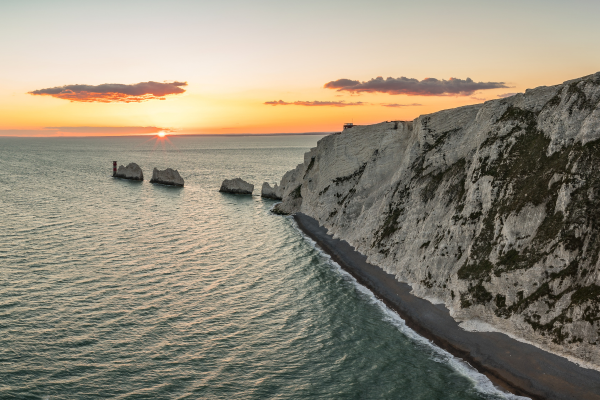
The Needles: A Geological Wonder
The iconic image of The Needles is a familiar sight, gracing souvenir shops across the UK. However, the history of these distinctive rocks, rising off the Island’s western coast, is less well-known. The Royal Geographical Society has hailed The Needles as one of the seven wonders of the UK. Comprising three prominent chalk stacks near Alum Bay, this formation was originally a quartet.
The lost rock, dramatically crumbling in 1764 during a fierce storm, was aptly named “Lot’s Wife” after the biblical story. Its fall was reportedly felt as far as Portsmouth, echoing through the region. The name “The Needles” stuck, even though these formations bear little resemblance to sewing needles.
A red and white lighthouse now stands at the base of the farthest rock, commencing its duties in 1859, replacing an earlier lighthouse located atop a cliff, which suffered from poor visibility. The lighthouse was automated in 1994.
St. Catherine’s Lighthouse: Guiding Ships with Power
Situated just five miles from Ventnor, at Niton Undercliffe, St. Catherine’s Lighthouse is a 40-meter stone tower constructed in 1838. It was later reduced in height by 13 meters in 1875 due to frequent fog obstruction. The lighthouse’s creation was prompted by the shipwreck of The Clarendon on hidden rocks near its location.
Trinity House maintains St. Catherine’s Lighthouse, ranking as the UK’s third most powerful lighthouse with a 25-nautical-mile range. The white octagonal tower boasts 94 steps leading to the lantern, with an adjacent tower built in 1932 that once housed the now-defunct fog signal. Tragically, a bombing raid in June 1943 destroyed the engine house, claiming the lives of three keepers on duty.
Since its automation in 1997, the lighthouse has been monitored and controlled by the Trinity House Operations and Planning Centre in Essex.

St. Catherine’s Oratory: The Medieval Lighthouse
As the sole surviving medieval lighthouse in England, St. Catherine’s Oratory, fondly known as the “Pepperpot,” stands proudly on the Isle of Wight’s southern coast, near Chale. This 11-foot stone tower is the only remnant of the original structure and was built by Walter de Godeton, a former Lord of Chale. His penance for pilfering wine from a shipwrecked vessel in Chale Bay in 1313 was to construct this lighthouse.
Walter chose this path to avoid excommunication, instead opting to employ priests to pray for his family’s souls, his own, and those of sailors at sea. The lighthouse remained staffed until Henry VIII’s dissolution of the monasteries in the late 1530s.
This four-story octagonal tower remains well-preserved, offering glimpses of the original building’s foundations. Nearby, you can also spot the foundations laid for a replacement lighthouse in 1785, humorously referred to as the “Salt Cellar,” though it was never completed.
The Longstone, Mottistone: A Neolithic Legacy
The Longstone, the Island’s sole Neolithic monument, is steeped in legend. As the tale goes, St. Catherine and the Devil engaged in a battle over the Isle of Wight. During their struggle, St. Catherine hurled a four-meter-high stone from the nearby Down, lodging it firmly in the ground in Mottistone. The Devil, in contrast, launched a smaller stone that fell short of St. Catherine’s, symbolizing her victory over evil.
These stones are believed to be remnants of a 6,000-year-old communal long barrow used for burial rituals. Bodies were laid out for scavenging animals, with the bones subsequently interred in chambers, forming the distinctive dome shape. The stones were likely relocated during Saxon times and, in the 19th century, by Lord Dillon, a local squire who was curious about what lay beneath. He found nothing, but pottery excavated in 1956 affirmed the stones’ Neolithic origin.
Present-day pagans gather at The Longstone to celebrate various dates, including the Summer Solstice.
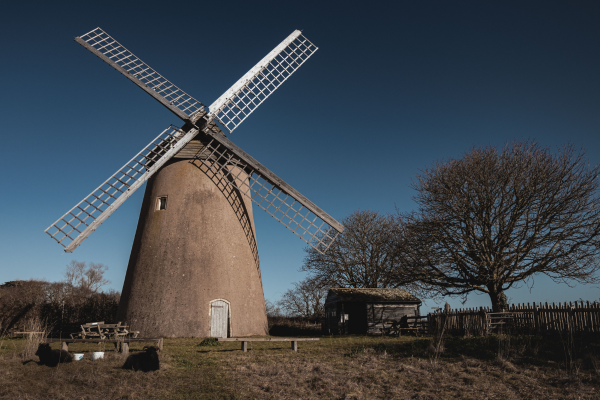
Bembridge Windmill: A Glimpse into the Past
Owned by the National Trust, Bembridge Windmill, a Grade I listed building, offers a fascinating look into the Island’s history. Built around 1700, it’s the only surviving windmill on the Isle of Wight. Much of its original machinery remains intact across its four stories, accessible via rather steep steps. Operational during Queen Victoria’s reign, it ceased functioning in 1913, making it a remarkable example of 19th and early 20th-century life and work.
Visitors can explore the windmill’s inner workings and enjoy the view that once inspired painter JMW Turner where you can admire a print of Turner’s unfinished work at the windmill kiosk.
Yarborough Monument: A Stately Landmark
An imposing figure awaits at Culver Down: the Earl of Yarborough Monument. This monument, the tallest on the Island, graces the eastern skyline and serves as a seamark for ships.
The monument was erected in memory of The Earl of Yarborough (1781-1846), born Charles Anderson Pelham in Lincolnshire. With significant influence and property holdings in both the City of London and the Isle of Wight, he left a lasting mark. In 1812, he became a Sheriff of the City, and locally, he owned extensive properties, including The Hermitage in Ventnor and over 1,700 acres of land. The monument was initially built to commemorate a visit by His Imperial Majesty Alexander the First, Emperor of all the Russias to Great Britain.
